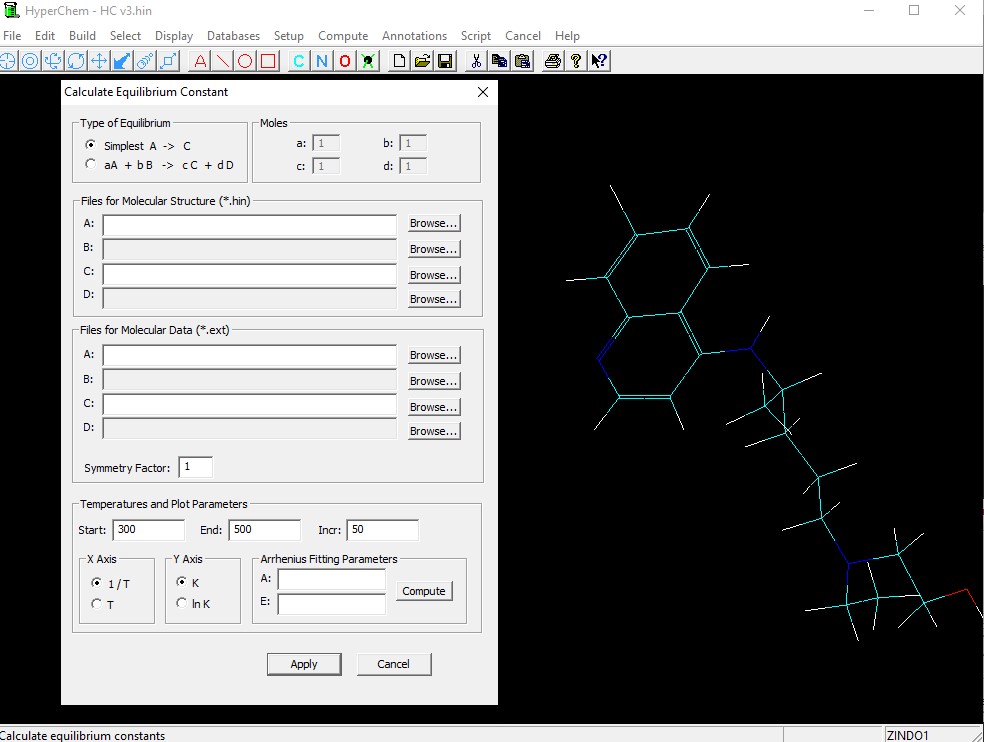Artificial Intelligence and Machine Learning in Reaction Engineering
Reaction Engineering lies in the heart of Chemical Engineering and is an essential part of manufacturing processes where at least one chemical reaction takes place. When designing a chemical reactor several aspects are considered. Given a set of known reactants and reaction kinetics, one aims at producing a specific product. However, at large-scale, one has first to answer under which conditions (temperature, pressure and/or composition of reactants) the chemical reaction takes place, or to examine the potential of the production of byproducts.
Once the type of chemical reactor is decided, the overall size of the reactor, and dimensions of any internal structures is studied. Of course, in Reaction Engineering, it is imperative to find optimal conditions accounting for the best performance of the reactor in terms of productivity, the final composition of the products, heat demands, monitoring pressure drops and cost efficacy. Overall, Reaction Engineering incorporates the understanding of thermodynamics and kinetics of chemical reactions combined with mass and energy balance equations, and thus, designing reactors could incorporate a significant number of degrees of freedom with non linear dependencies not allowing for the easy handling of the set of equations.
Artificial Intelligence (AI) or Machine Learning (ML) approaches are becoming essential more than ever in industrial applications (such as Chemical and Biological industries, Oil & Gas, Petrochemicals, Pharmaceuticals, Biotechnology, Pulp & Paper, to name a few), because of the current technological advances in terms of availability of large volumes of data, massive computing power, and sophisticated algorithms. ML seems to have a great potential in supply-chain management and manufacturing, sustainability, workforce productivity, improvement in energy consumption, detection, and quality assurance of products, or even in optimising performance of physical and chemical operating units. In the case of smart manufacturing processes, the data helps a lot in terms of automating the process and even predicting and monitoring the performances.

Statistical techniques, such as principal component analysis (PCA), partial least squares (PLS), canonical variate analysis (CVA), probability point estimation models and prediction error methods have been extensively used in industry. Furthermore, important to industrial applications are several classification and clustering algorithms, such as k-means, Support Vector Machines (SVMs), Fisher Discriminant Analysis (FDA). Finally, nonlinear approaches, such as kernel methods, Gaussian Processes (GPs), and adaptive control algorithms, such as Reinforcement learning have been applied in some special applications. Among the ML methods, Artificial Neural Networks (ANNs) receive the greatest attention, since they outperform several different application areas, whereas for developing inferential models SVM is the second most popular used ML method.
As far as the Reaction Engineering is concerned, ML methods could tremendously help in automatically discovering reaction pathways, optimizing reaction conditions or even enhance fault detection and diagnosis in Health and Safety analysis. In particular, uncovering unknown pathways form chemical reaction networks is the first step understanding a chemical process before proceeding to large-scale reactor design. Discovering new reaction pathways is a scientific task which could last decades, whereas it is very important the corporation of researcher and scientist with expert knowledge. On the other hand, taking advantage of available data, AI could enhance and boost the success of this procedure. For example, it is possible to discover reaction pathways from concentration data series by making use of a method called Chemical Reaction Neural Network (CRNN). CRNN allows for the implementation of the fundamental physics law of the law of Mass Action and Arrhenius Law and hence resembles a chemical reaction network, at which its weights correspond to the reaction pathways and rate constants of the chemical reaction network. As aforementioned, optimizing chemical reaction conditions is a great deal when designing a chemical reactor. Again, by means of AI, such as Deep Reinforcement Learning (DRL) or Convolutional Neural Networks (CNNs) find many applications in real-time optimization and control of non-linear processes. For instance, it is possible to combine the sophisticated DRL method with field knowledge of chemistry to get the current experimental condition and yield and thereon to predict the next attempted experimental conditions. Not only chemical reactions are optimized, but also, we acquire better knowledge on the underlying mechanisms of those reactions.

Furthermore, the type of reactor is very important in Reaction Engineering where, in most cases, the presence of catalysts is vital for activating and sustain a reaction. Supervised, and unsupervised ML tasks seem to be useful in Catalytic performance in terms of catalytic activity, prediction of reaction yield or even discovering new catalyst candidates. In case of homogeneous catalysts, regression tasks (e.g. linear regression, kernel ridge regression) give insight into the quantitative relationship between the structural descriptors and catalytic activity and/or other properties, while decision-making algorithms like Random forest or Neural Networks could account for the importance of descriptors or the prediction of reaction yield, respectively. The discovery of catalyst candidates effectively is imperative for heterogeneous catalysts. The combination of ML and Quantum Mechanics calculations are used. Again, regression task and Deep Learning could further answer what is the reactivity of catalysts based on the correlations between structural descriptors and reactivity properties.
Finally, when designing a chemical reactor, one has also to consider the environmental impact as well as to ensure the normal operating state of a chemical reactor. Indeed, ML could be very useful in Health and Safety of operating systems for preventing accidents, by integrating a model for 24/7 monitoring and warning system. For example, temperature conditions play a key role in ensuring normal operation of the process. If for any reason, the established controlling systems do not work properly, there is a potential malfunction while the reactor is in operation. In this way, historical data of the process could be utilized in order to identify the existence of common patterns in major accidents. One way is to perform a clustering for classifying for example possible states of equipment (normal, warning etc.) and then to apply other ML methods for achieving a fault detection and diagnosis. In this way, the normal operation of the physical and chemical units of the plant is attained, preventing in this way accidents.
